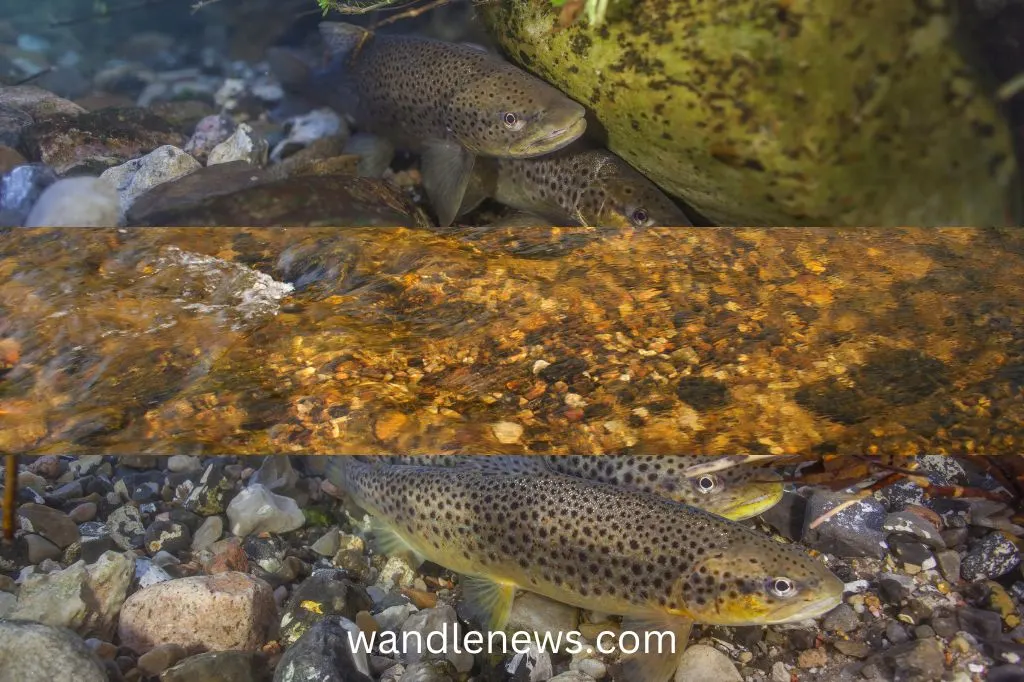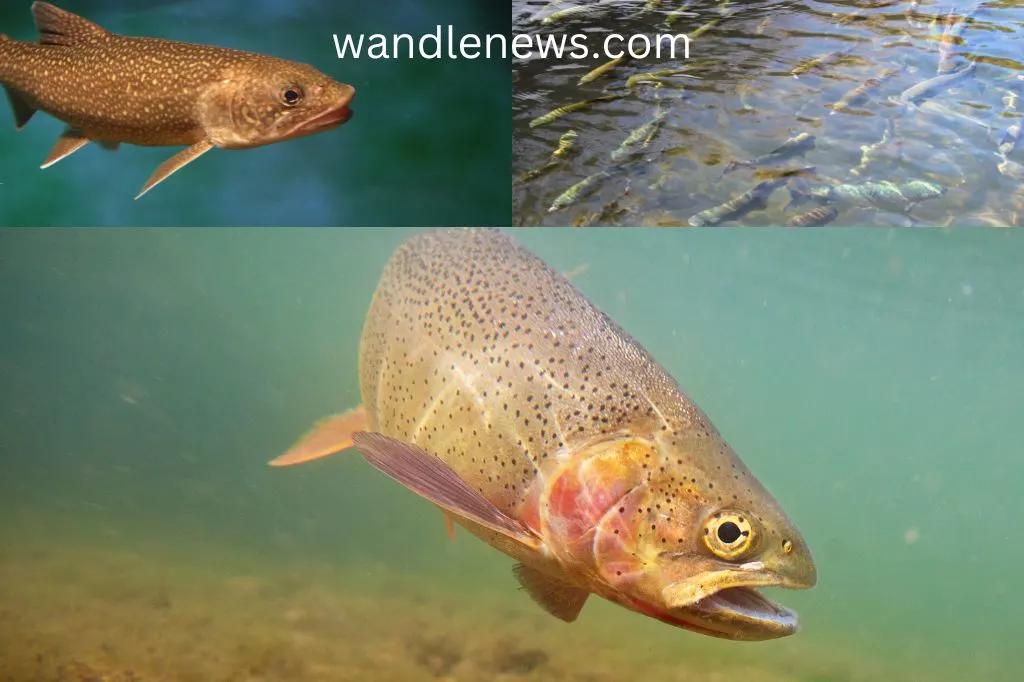There are three reasons why trout swim upstream: to spawn, to help them breathe, and to catch food.
When trout are swimming upstream to breathe or catch food however, they are facing the current but remaining in the same place. When they are swimming upstream to spawn, on the other hand, they can travel for many miles.
This post explains trout behaviour during spawning season, particularly on the river Wandle in South London. It also details how swimming upstream helps trout to breathe and catch prey.

Do Trout Swim Upstream to Spawn?
The headwaters of a chalk stream provide the ideal environment for trout to spawn. This is why brown trout swim upstream in the winter time to lay their eggs. They seek out gravel river beds, with cold, shallow water that contains lots of oxygen.
This is the reason why, in the river Wandle, most of the trout are found upstream, such as by Poulter Park, or Goat Bridge, where they can easily reach areas that provide ideal spawning grounds. In the wintertime, they swim further upstream towards Carshalton or Hackbridge to lay their eggs.
It is rare to find trout further downstream in places like Earlsfield or Wandsworth Town, as the environment in this section of the river is not good for spawning. Since humans started building weirs across the Wandle, it also interrupted the trout’s natural spawning migrations.

Spawning Season for Trout of Different Species
The life cycle of all trout is generally the same. The female trout swims upstream and lays its eggs in nests known as redds, in gravel with a good flow of water. The male trout then fertilises the eggs, which take between 60-90 days to hatch depending on the water temperature.
The main difference between different trout species is the time of year they spawn. Brown trout, which are the most common species of trout found in the Wandle, spawn in the winter, whereas rainbow trout spawn in the spring.
Fun Fact: Although trout and salmon are known as the classic migratory species, coarse fish also migrate to find good spawning habitats as well.

Other Reasons Why Trout Swim Upstream
Other than to spawn, there are two other reasons why trout swim upstream:
- To help them breathe
- To catch more food
To Breathe
Trout breathe through their gills. As water enters their mouths, it flows over their gills where oxygen is absorbed through the gill tissue into the blood.
From the gills the oxygen is then pumped throughout the trout’s body. It is easier for the trout to allow water to flow into its mouth if it is facing upstream.
Fishing Tip: Trout’s gills are very delicate. If you grab your catch by its gills or insert your fingers into the gills, you could damage them. The trout may swim away when you release it, but it will die later from gill damage.
To Catch More Food
Trout often face the current and swim so that they stay in one place. They do this while they wait for food such as small fish, insects, or worms to float by on the current. It is easier for the trout to catch its food this way rather than having to chase it.

Other Articles Related to Trout
- Do Trout Bite at Night?
- Are Brown Trout Good to Eat?
- Brown Trout vs Rainbow Trout – What’s the Difference?
- Facts About Trout
Do Trout Swim Upstream?
This article was about whether trout swim upstream. If you are trout fishing, especially on the Wandle it is best to choose a spot upstream, since trout instinctively return to the place of their birth to spawn. This also applies to other species of fish such as anadromous fish like salmon.
